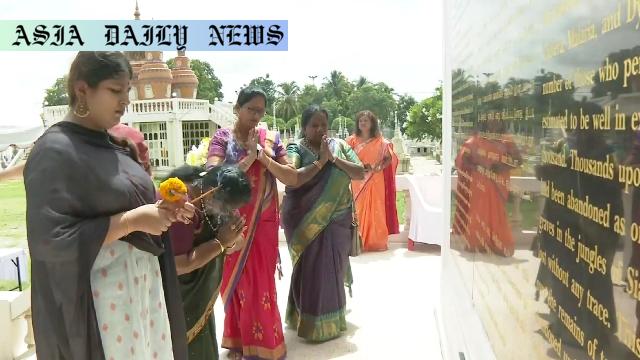Death Railway: Remembering those who perished during its harrowing construction in WWII, with families still seeking answers.
Over 200,000 people were mobilized to build the Thai-Burma ‘Death Railway.’
The railway construction claimed tens of thousands of lives in WWII.
A memorial in Thailand commemorates the workers who faced brutal conditions.
Descendants of victims continue grieving without closure about their ancestors’ past.

Remembering the Tragedy of the Thai-Burma Death Railway
The harrowing construction of the Thai-Burma Railway, often referred to as the ‘Death Railway,’ remains one of World War II’s most tragic chapters. Built by the defunct Imperial Japanese Army in 1942, the railway was intended to establish a vital supply route to support Japan’s operations in Burma (now Myanmar). Behind this logistical project lay unspeakable hardship, as over 200,000 forced workers—comprising British and Allied prisoners of war (POWs) alongside thousands from Asian nations—were subjected to unimaginable labor under hostile conditions.
The process of building the Death Railway is infamous for its profound human toll. Workers faced grueling schedules, insufficient food, hazardous environments, and constant exposure to diseases such as cholera and dysentery. Many were physically tortured or succumbed to exhaustion. By the railway’s completion, an estimated 102,000 people had lost their lives, including 12,000 Allied POWs. This tragic history became further immortalized through the Oscar-winning 1957 film “The Bridge on the River Kwai,” which, while dramatized, drew global attention to this cruelty and its far-reaching legacy.
The Kanchanaburi Memorial Service: Honoring Lost Lives
To honor those who lost their lives, a solemn memorial ceremony was recently held at a temple in Kanchanaburi, Thailand. This location holds particular significance: it houses graves where numerous Asian laborers who worked on the railway are believed to have been laid to rest. Around 20 individuals, including descendants of the victims, gathered to pay tribute and remember their ancestors. Each year, these commemorations serve as a poignant reminder of the tragedy, ensuring that the sacrifices of those who toiled under brutal conditions are never forgotten.
One attendee, an 80-year-old woman, shared a personal story that underscores the ongoing emotional weight carried by the families of the fallen. Her father was conscripted to labor on this railway while her mother was pregnant with her. Decades after the war’s conclusion, the lack of closure still haunts her family, leaving questions about where and how their loved ones perished.
Carrying Forward the Legacy of Those Who Sacrificed
The Death Railway and its construction epitomize humanity’s capacity for both progress and cruelty. Though physically completed, it left behind scars that continue to resonate among generations of victims’ families. Memorials like the one in Kanchanaburi play a critical role in fostering remembrance and dialogue, particularly in highlighting the exploitative labor systems and atrocities committed during wartime.
The importance of these lessons lies in their potential to drive change and ensure such histories are not repeated. Today, these memorials draw tourists, historians, and descendants who seek to help keep these stories alive. They also beg the question of how we, as a global society, can strive toward unity and peace while acknowledging ugly chapters of our collective past.



Commentary
The Human Cost of the Death Railway: Reflecting on Tragedy
The recent memorial service for the victims who perished during the construction of the Thai-Burma ‘Death Railway’ evokes strong emotions, reminding us of the profound human cost tied to infrastructure projects conducted under oppressive regimes. It is devastating to imagine the fate of over 200,000 individuals, many of whom had no choice but to endure forced labor amidst ghastly conditions. These stories serve as a grim but important reminder of how war often erases humanity from progress-driven endeavors.
The Power of Memory and Resilience of Generations
What strikes most about this ceremony is the resilience of victim families who continue to grieve without answers. When the 80-year-old attendee shared her deeply personal story, it unfolded how the anguish from 80 years ago resonates even today. This isn’t just about history but about real people whose lives were irrevocably scarred or lost. Her story is both heartbreaking and a testament to the strength of those who carried on amidst unimaginable grief.
Taking Lessons from the Past: A Global Perspective
On a broader scale, what happened on the Death Railway isn’t an isolated incident in human history. Parallel atrocities and forced labor practices have unfolded in countless nations during wartime periods. Reflecting on these horrific events through the lens of today’s society should ignite conversations around humanity, justice, and global harmony. This story isn’t just Thai history; it’s a cautionary tale for the world to remember and learn from.